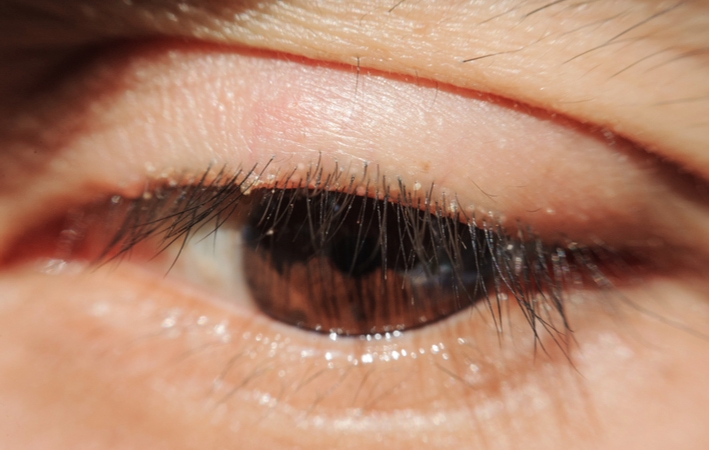Treatment for Eye Infections
Optometrists are trained to understand how vision works, including recognizing eye disease, vision problems, and eye injuries. Regular eye exams help optometrists diagnose changes to vision and eye health. In addition to observing your eye health, optometrists can also treat many health conditions affecting eye structures and tissue.
One common type of eye problem optometrists help with is eye infections. Optometrists can diagnose the type of infection and recommend treatment—including prescribing medication when necessary.
Common Eye Infections
Optometrists can diagnose and treat various eye infections and conditions. They have an in-depth knowledge of how the eye works and how health conditions can impact your vision. Some of the most common eye infections optometrists can help treat include:
Conjunctivitis
Pink eye (conjunctivitis), sometimes also called red eye, gets its name from its most apparent symptom: eye redness. The condition occurs because of conjunctiva inflammation. The conjunctiva is a transparent tissue covering the eye’s surface and the inner eyelids.
There are 3 types of conjunctivitis: allergic, infectious, and chemical. Allergic and chemical conjunctivitis is not contagious and is caused by substances or objects contacting the eye. Infectious conjunctivitis, either viral or bacterial, is contagious.
Symptoms can range depending on the type of conjunctivitis but typically include:
- Burning or itchy eyes
- Discharge (stringy, watery, or sticky)
- Excessive tearing
- Eyelid swelling
- Eye redness (or pinkness)
- Sensitivity to light
How conjunctivitis is treated depends on the type. For example, allergic or chemical conjunctivitis is caused by environmental or chemical irritation. Therefore, removing the allergen or avoiding chemical exposure can improve symptoms. On the other hand, infectious conjunctivitis is contagious and should be treated as soon as possible to prevent spread.
Other treatment options may include:
- Antibiotics
- Antihistamines
- Eye drops
- Medicated ointment

Blepharitis
Blepharitis is a common chronic condition that causes inflammation of the eyelids. Therefore, eyelid hygiene plays a crucial role in prevention. It occurs when inflammation clogs oil glands behind the eyelashes, resulting in less oil reaching the eye. The oil glands are essential for producing a healthy tear film.
When untreated, the clogged oil glands commonly cause meibomian gland dysfunction (MGD), leading to dry eye. The condition also increases the risk of eye infections and styes.
Blepharitis is more common in people with oily skin and dandruff. The condition can occur at any age.
Typical symptoms include:
- Burning or irritation
- Crusty eyelids
- Eyelid swelling
- Eyelids “glued shut”
- Inflammation & redness
- Loss of eyelashes
Symptoms can be managed with at-home and prescribed treatment methods, including:
- Antibiotic ointment
- Eye drops
- Lid scrubs
- Warm compresses
Endophthalmitis
Endophthalmitis is severe inflammation of fluids inside the eye caused by a bacterial or fungal infection. The infection can occur when bacteria or fungi enter the eye through a cut or scratch, such as after an injury or eye surgery. Common symptoms include:
- Red eyes
- Pus from the eye
- Eyelid swelling
- Light sensitivity
- Vision loss
It’s crucial to seek treatment as soon as possible to prevent worsening symptoms. Endophthalmitis is treated with antibiotics or antifungal medication, sometimes inserted directly into the eye using a tiny needle. In severe cases, vitrectomy surgery may be recommended to remove infected fluid (the vitreous humour).
Cellulitis (Eye or Eyelid)
Cellulitis is a common bacterial infection affecting deeper tissue layers. Eyelid cellulitis or orbital cellulitis is the form concerning the eyelid or eye tissue, respectively. Bacteria typically enter eye tissue after an eye injury. Alternatively, it can be introduced through nearby tissue structures, such as sinus infections.
Untreated cellulitis can cause severe, life-threatening conditions. Some common symptoms include:
- Bulging eyes
- Difficulting moving the eye
- Discharge (eye or nose)
- Double vision
- Eye pain & swelling
- Fever
- Headache
- Inflammation & redness
- Nasal tenderness
- Vision loss
The necessary treatment depends on the severity of the infection. The standard treatments are antibiotics or surgery.
Keratitis
Keratitis can be caused by injury or infection resulting in cornea inflammation. The condition is common in people who wear contact lenses, as the lenses are placed directly over the cornea.
Symptoms of keratitis include:
- Blurry vision
- Eye discharge
- Eye pain or irritation
- Light sensitivity
- Inability to open the eye
- Redness
- Watery eyes
- Vision impairment
As keratitis can result from injury or infection (viral, bacterial, or fungal), an optometrist must determine the cause before prescribing treatment. However, eye drops, ointments, or oral medications are the most common treatment methods. For example, for bacterial keratitis, an optometrist may prescribe antibiotic eye drops.
Styes
A stye (hordeolum) is a small, pimple-like bump appearing on the eyelid. Styes are blocked glands that become infected, leading to swelling. Common symptoms include redness and pain.
Like a pimple, the stye will eventually come to a head. Patients can use a warm compress (5–10 minutes, 3–6 times a day) to open the pore and bring the pus to the surface. An optometrist may also prescribe an ointment to apply after the warm compress.
The stye may open naturally, allowing fluid to drain. However, a stye that is large or located under the eyelid should be examined by an optometrist where they can recommend after-care treatment, such as antibiotic ointment.
Contact Us for Healthy Eyes
Whether you have concerns about your vision, eye infections, or eye health, we can help. If you experience any symptoms listed above and/or haven’t had your annual eye exam, contact us today and talk to one of our licensed eye care professionals about your eye care and booking an appointment today.



